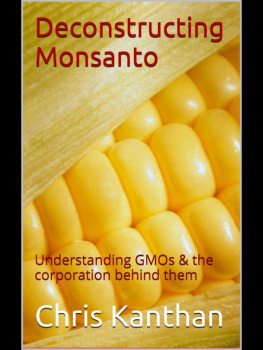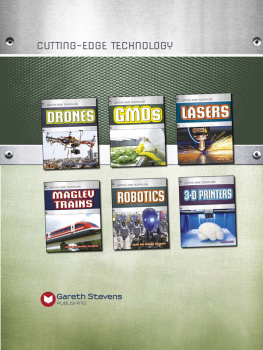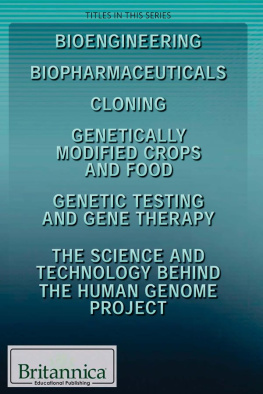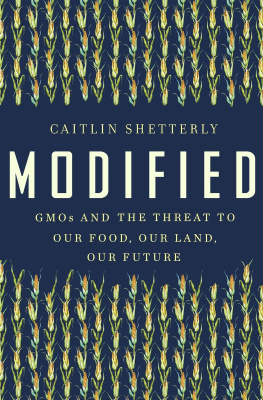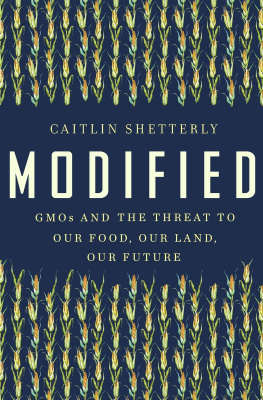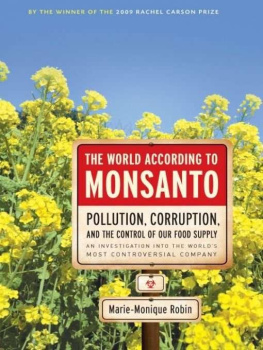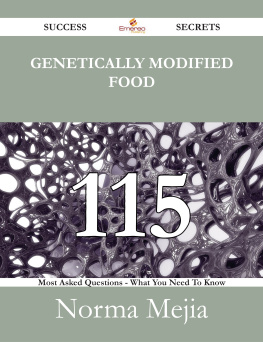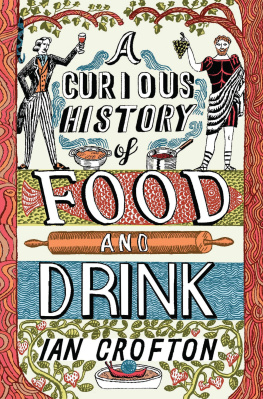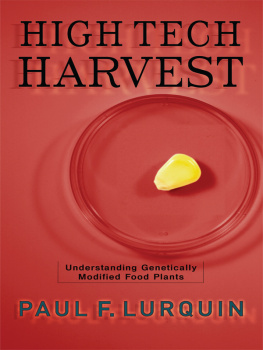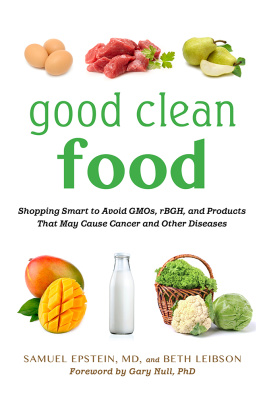Deconstructing Monsanto
Understanding GMOs and thecorporation behind them
By Chris Kanthan
Published by Kanthan Publishing
Smashwords Edition
Copyright 2013 Chris Kanthan
Smashwords Edition, License Notes
This ebook is licensed for your personalenjoyment only. This ebook may not be re-sold or given away toother people. If you would like to share this book with anotherperson, please purchase an additional copy for each recipient. Ifyoure reading this book and did not purchase it, or it was notpurchased for your use only, then please return to Smashwords.comand purchase your own copy. Thank you for respecting the hard workof this author
Table of Contents
Introduction
Five years ago, Monsanto and GMO were tiny blips on the radarof social conscience, with the discussion relegated to a few peopleon the fringes. Today, dozens of bills on GMO labeling are being considered across the country fromVermont to Oregon. Last year, Proposition 37 in California almostpassed. People have suddenly become more aware of GMOs, and thedemand for organic food is rising fast. People are rallying againstMonsanto and other biotech companies to stop them from privatizingand monopolizing our food supply. Those are all the goodnews.
The bad news is that mostpeople are not quite sure about the pros and cons of GMOs. Theyfeel ambivalent about this new technology that seems so excitingand promising. Activists, who are passionate and well-informed, areunable to change the hearts and minds of those sitting on thefence. The failure of Prop 37 shows how easy it is for Monsanto and their allies to confuseand scare people.
This book is the result of my own journey inseeking to comprehend the relationship between food and health.What I found was quite shockingour food supply and the entireecosystem are, potentially, at a point of no return. It isimperative that we understand the GMO technology and itsimplications, educate people, and talk about the issues using factsand conviction. This article is in the form of a conversationbetween two people; in reality, it is a representation of numerousconversations I have had with friends and strangers. Hopefully,this will be an informative e-book and a reference tool for thosewho seek to understand GMOs better; passionate advocates will alsofind effective strategies for changing hearts and minds of friendsand strangers.
Conversation
Friend: Hey, I heard that you are going to the March againstMonsanto . Have you officiallybecome a tree-hugging liberal?
Me: Its not just a liberal issue anymore.Ron Paul supporters, libertarians and conservatives are alsoturning against Monsanto and GMO.
Friend: Honestly, this is just pure hysteriaand paranoia. I dont understand what the big deal is. Biotech is agood thing. We need all the help we can get from science andtechnology to feed the ever-growing world population.
Me: You support genetically modified foodbecause thats the way to provide more food with limited land andwater resources?
Friend: Of course. I am not a GMO expert,but we need plants and crops that give higher yield. Also, fromwhat I understand, the GMO plants are drought-resistant andpest-resistant. All those are good things!
Pest-resistant GMO
Me: Okay, you have mentioned a whole range of issues, and Ihave to admit that you are better informed than many people. Letsgo through one issue at a time. First, lets look at the aspect ofGMO crops being pest-resistant. Do you know how they becomepest-resistant?
Friend: Ummnever quite thought of that.
Me: In a nutshell, the plants are modifiedso that they become little factories of pesticides. Every cell ofthe plant produces pesticide, day and night. Whether there arepests around or not, the plant keeps oozing pesticideeverywherestems, branches, leaves, flowers, seeds, fruits etc. Youcan imagine how when you take a bite out of your food, you get todrink some of that yummy pesticide!
Friend: You are kidding me!
Me: Nope. The pesticide is called BtToxin. When an insect eats the plant, the toxin bursts the stomachof the insect and kills it.
Friend: That sounds horrible because Ialways thought we could wash the pesticides off food. What doesBt stand for, anyways?
Me: Bacillus Thuringiensis, named after thebacteria.
Friend: Okay, but I dont think Bt toxin hasbeen proven to be really harmful.
Me: First, regardless of the safety factor,would you rather eat a corn on the cob with loads of Bt toxin orwithout the toxin?
Friend: Without the pesticide, ofcourse.
Me: I will get to the safety factor in amoment. However, there is just one more thing to considerthetechnology involved in modifying the genes of the plants.
Friend: Well, yeah, the biotech companieschange the genes of the plants. So what? Mother Nature has beenmodifying genes for millions of years!
Me: Good point, except that Mother Naturedoes not mix genes between random plants, let alone species. Naturedoes not let an orange mix with a banana. You can grow tomatoes ina field full of frogs for thousands of years, but you wont get atomato with a frog gene. Genetic engineering involves mixing ofgenes that will never, ever occur in naturefish genes in a tomato,spider genes in a goat, human genes in plants, or in the case of BtToxin, a bacterias gene in a plant.
Friend: It sounds like sci-fi.
Me: Sure it does. When it comes to genes,the tiniest change can have a huge effect. Think about it: 96% of achimpanzees genome is the same as a human being. Change 4% of yourgenes, and voila, I will be talking to a chimp!
Friend: Yeah, but I am sure that thescientists know what they are doing, and that they do a lot oftests.
Me: You are sure about that, or are you justhoping?
Friend: I am hoping. You said you would talkabout the safety and testing procedures.
Herbicide-tolerant GMO
Me: Okay, I will get to it. I just wanted toquickly talk about the second popular method of geneticallymodifying plants. This involves making the plants resistant toherbicides. Not to all herbicides, but certain herbicides that thesame biotech companies make. In case of Monsanto, its Roundup.
Friend: Oh yeah, who hasnt heard ofRoundupthe most efficient weed killer.
Me: Yes. Furthermore, not only is Roundupused by farmers all over the world, but it can also be consideredthe Mother of all GMOs.
Friend: How so?
Monsanto: DDT, PCB, and Agent Orange
Me: Monsanto is, and hasbeen for a long time, a huge chemical company. It made huge profitsin the 1940s through the 1960s selling DDT, the insecticide thatwas later banned in 1972. For more than thirty years, DDT waswidely used in America to kill mosquitos. There were DDT trucksthat went around small towns spraying DDT literally on peoplesfaces . There were planes flyingover towns spraying DDT. All in all, more than one billion poundsof a dangerous and a soon-to-be-banned chemical was sprayed allover America!
Friend: How did they find out it washarmful?
Me: Even in the 1940s,scientists were starting to be concerned about the side effects ofDDT. However, Monsanto and other chemical companies successfullysilenced them, and the FDA and other governmental agencies blessedDDT to be safe. There was just too much money at stake. A personwho played a pivotal role in revealing the dangers of DDT, andpesticides in general, was Rachel Carlson. She wrote a book called SilentSpring which became a bestseller and pretty much jumpstarted the environmentalist movement.It is described as one of the greatest science books everywritten.
Friend: Yeah, Ive heard of that book. Shefound that birds were disappearing in her neighborhood andconnected that to pesticides, right?

